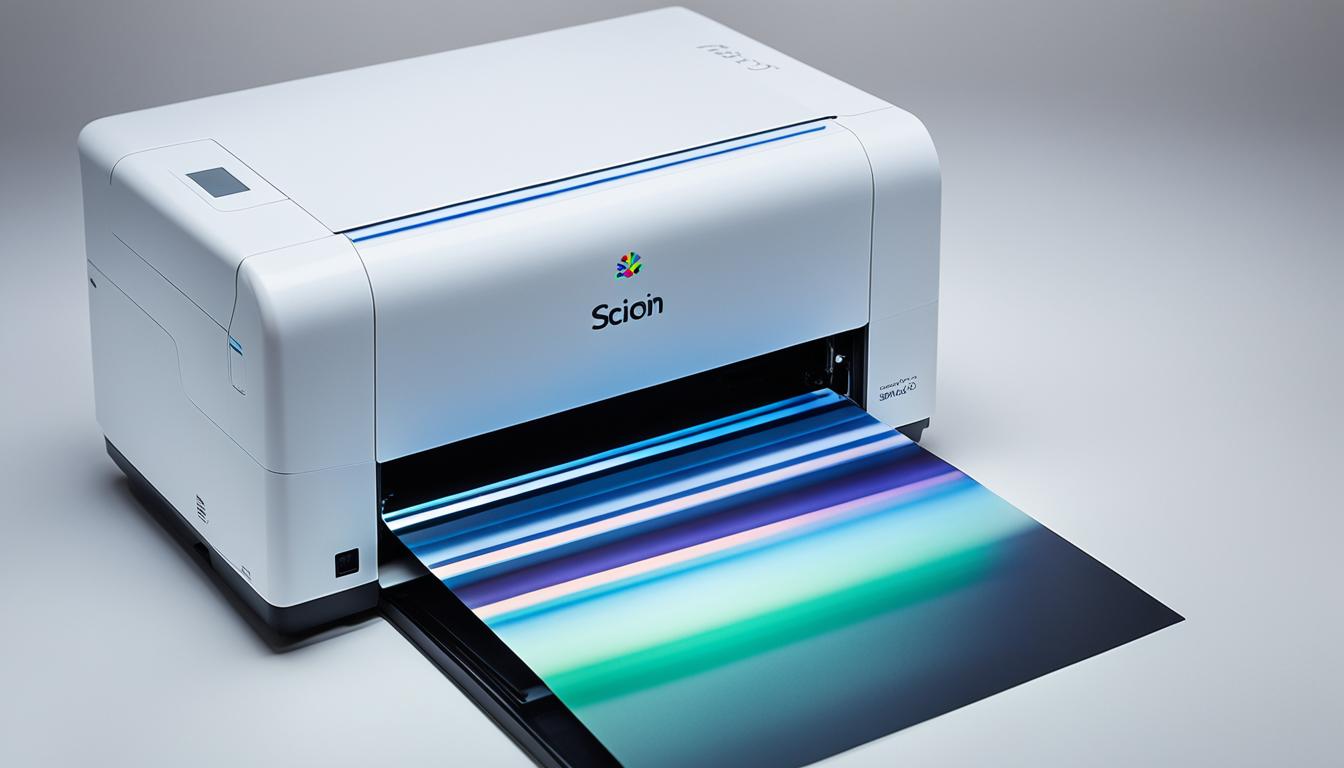Printing technology has come a long way from traditional ink-based printers. With the latest innovation, you can now print without ink! So how do printers print with no ink? This question will be answered in this article, as we explore the incredible world of inkless printing.
Inkless printing technology is quickly gaining popularity in various industries, from offices to medical practices. With no need for ink cartridges, inkless printers are cost-effective, environmentally friendly, and offer reliable and efficient printing solutions.
Key Takeaways
- Inkless printing technology eliminates the need for traditional ink cartridges.
- Thermal and electrostatic printing techniques are used to produce high-quality images and documents.
- Inkless printing is cost-effective, environmentally friendly, and efficient.
- Specialty industries such as medical practices and photography utilize inkless printing technology.
- Maintenance and troubleshooting of inkless printers require different guidelines compared to traditional ink-based printers.
Introduction to Inkless Printing
Inkless printing technology is a cutting-edge development in the printing industry. Unlike traditional inkjet or laser printers, inkless printers use unique mechanisms that produce high-quality images and text without ink cartridges. The technology has transformed the printing industry, offering more cost-effective and environmentally friendly solutions for businesses and individuals alike. In this section, we will explore the basics of inkless printing and how it works, highlighting the advantages it brings to the world of printing.
At the heart of inkless printing is advanced printer technology, which uses thermal or electrostatic processes to create images and text without ink. Instead of ink cartridges, inkless printers incorporate specially designed paper, which reacts to the thermal or electrostatic charges, producing the desired output.
The advantages of inkless printing technology are numerous. Not only is it cost-effective, but it also eliminates the need for wasteful ink cartridges and reduces environmental impact. Moreover, inkless printing mechanisms are highly reliable and efficient, providing high-quality output in a fraction of the time compared to traditional printing methods.
As more companies and individuals look for more sustainable and cost-effective solutions, inkless printing technology has gained popularity. In the next sections, we will delve into how the two primary inkless printing techniques – thermal printing and electrostatic printing – work.
Understanding Thermal Printing
Thermal printing is a popular method used by inkless printers, and it works by generating images without ink. The science behind this process is fascinating, and it all starts with the thermal print head. This special component is responsible for applying heat to the special paper used in thermal printers, resulting in the creation of images.
The thermal print head is a tiny grid of thousands of heating elements that create the images by heating the paper in a precise pattern. As the paper passes through the printer, the heating elements activate, producing the desired image or text. The paper used in thermal printing contains a layer of heat-sensitive dye that darkens in response to heat, resulting in the final image.
Thermal printing is widely used in various industries, including retail, healthcare, transportation, and more. It offers several advantages over traditional ink-based printing, including lower costs, faster printing speeds, and fewer maintenance requirements.
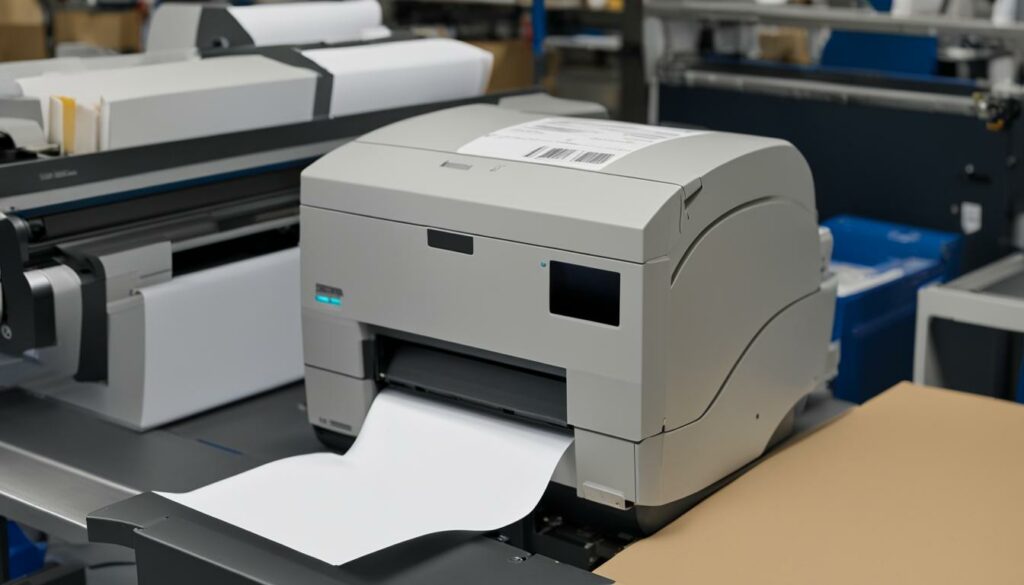
The thermal print head is a crucial component in thermal printing, generating images without ink using precise heat application to heat-sensitive paper.
Electrostatic Printing Explained
Inkless printers use various techniques to generate images on paper. Electrostatic printing is another technique used by these printers that eliminates the need for traditional ink cartridges. An electrostatic charge is applied to the imaging surface, which attracts toner particles, and then fuses them onto the paper to create the desired image.
The printing process begins with a process called “charging,” where a wire with a high voltage charge applies an electrostatic potential to the printer's drum or belt. Next, the toner particles receive a negative charge by passing through a negatively charged magnetic field. The toner then sticks to the drum or belt, creating a visible image.
The toner particles are then transferred onto the paper using a higher voltage charge applied to the paper. The fuser assembly then heats the paper to melt the toner, fusing it permanently onto the page.
Unlike traditional ink cartridges that run out of ink, toner cartridges can be replaced, and can last for thousands of pages, making electrostatic printing a cost-effective alternative.
Advantages of Electrostatic Printing
- Cost-effective printing with long-lasting toner cartridges
- Faster printing speeds compared to traditional ink-based methods
- High-quality prints with precise and sharp text and graphics
- Less maintenance required for the printer in comparison to ink-based printers
The Advantages of Inkless Printing
Inkless printing technology is becoming increasingly popular in the printing industry due to its numerous advantages over traditional ink-based methods. For businesses and individuals, inkless printing offers cost-effective, environmentally friendly, and convenient printing solutions.
| Advantages | Description |
|---|---|
| Cost-Effective | Inkless printing eliminates the need for expensive ink cartridges, saving users money in the long run. Printers that utilize inkless technology also generally require less maintenance. |
| Environmental-Friendly | Inkless printing uses less energy and resources compared to traditional printing methods. It also eliminates the need for ink cartridges, reducing plastic waste and its negative impact on the environment. |
| Convenient | Inkless printers are often smaller and more compact than traditional printers, making them ideal for home and office use. They also produce prints faster than traditional printers, allowing for quick and efficient printing. |
Cost Savings
One of the most significant advantages of inkless printing is the cost savings it provides. With traditional printers, ink cartridges can be a significant expense, especially for high-volume printing. Inkless printers eliminate this cost, providing a more affordable printing solution in the long run. Additionally, inkless printers typically require less maintenance, saving users even more money.
Environmental Benefits
Inkless printing is an eco-friendly printing option as it eliminates the need for ink cartridges. Traditional ink cartridges contribute to plastic waste and take a long time to decompose, whereas inkless printers require less waste production and use fewer resources overall. By choosing inkless printing, businesses and individuals can reduce their environmental impact without compromising the quality of their prints.
Convenient Printing
Inkless printers are often smaller and more compact than traditional printers, making them ideal for home and office use. They also produce prints faster than traditional printers, allowing for quick and efficient printing. Additionally, inkless printers are often more versatile, printing on a wider range of paper types and in varying formats.

Overall, inkless printing technology offers numerous advantages over traditional ink-based printing methods. From its cost-effectiveness to environmental-friendliness, inkless printing is the printing solution of the future.
The Future of Inkless Printing
While inkless printing technology has already made significant strides in recent years, its future looks even brighter with the emergence of new technologies and advancements in the field.
One of the key areas of focus for inkless printing technology is the development of improved thermal print heads that can print at faster speeds while maintaining high-quality images. This advancement will allow inkless printers to compete with traditional ink-based printers that are currently faster.
Another area of growth for inkless printing is the development of new electrostatic technologies that can print in multiple colors without the need for separate toner cartridges. This breakthrough will expand the applications of inkless printing to areas beyond simple black and white documents, allowing it to enter the market of photography and photo-realistic printing.
The deployment of IoT technology in printing solutions also promises to bring significant changes to the inkless printing industry. With the integration of IoT devices, inkless printers will become more efficient and user-friendly, optimizing printing processes to reduce costs and improve productivity.
Overall, the future of inkless printing is a bright one, with emerging technologies and advancements leading the way. As this technology continues to evolve, it will offer sustainable, cost-effective, and reliable printing solutions for a vast range of applications.
| Benefits | Challenges |
|---|---|
| Cost-effective printing solution | Initial investment can be high |
| Environmentally friendly | Not suitable for all printing needs |
| Minimal maintenance required | Some inkless printers have slower speeds |
| Improved technology allows for high-quality image printing | Not suitable for all types of paper |
As illustrated in the table above, inkless printing has numerous benefits and challenges. However, advancements in technology and innovative solutions target these challenges and make the benefits even more compelling.

Direct Thermal Printing Applications
Direct thermal printing is a type of inkless printing that uses a special type of paper that is coated with a heat-sensitive layer. When the heat from the printer's thermal print head is applied to the paper, it creates high-quality images and text without the need for ink or toner. This technology offers a range of applications across various industries:
Printing Receipts
Direct thermal printing is widely used for printing receipts. It provides a cost-effective and efficient solution for retail, hospitality, and other businesses that require instantaneous printing of receipts. The lack of ink or toner cartridges also reduces maintenance costs and makes direct thermal printers more environmentally friendly.
Shipping Labels
Direct thermal printing is also a popular choice for printing shipping and barcode labels. This technology provides high-quality, durable labels that are resistant to smudging, fading, and tearing. It is commonly used in logistics, manufacturing, and distribution industries where reliable and high-speed label printing is crucial.
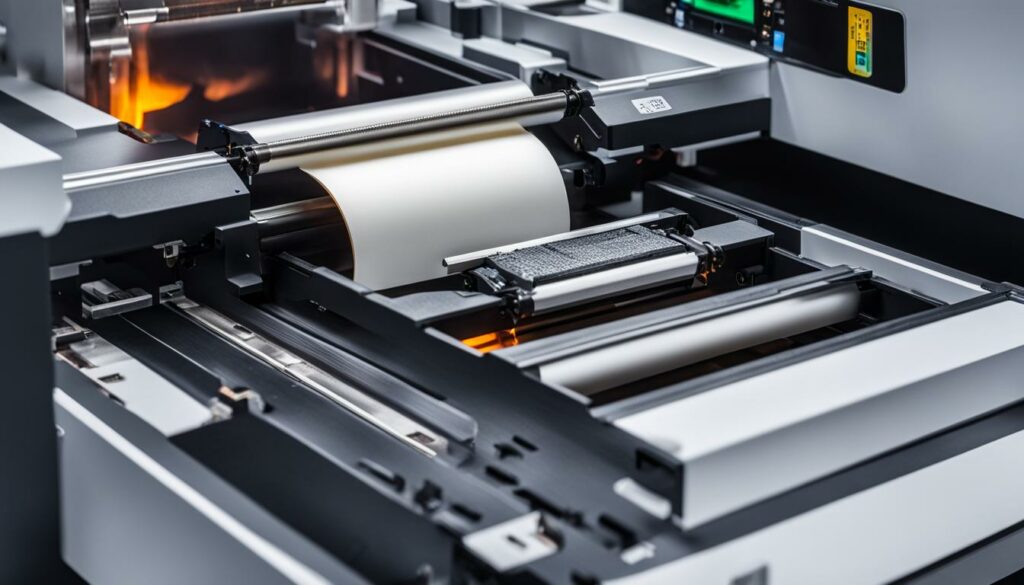
Other Applications
Direct thermal printing can be used for a wide range of applications, including printing tickets, name tags, tags for clothing and merchandise, and more. Its versatility, speed, and cost-effectiveness make it a viable alternative to traditional printing methods in many situations.
Electrostatic Printing in the Office
When it comes to efficient and reliable printing solutions for office use, laser printers are the go-to choice. Laser printers use electrostatic technology to produce high-quality documents and images quickly, making them ideal for busy office environments. Unlike traditional ink-based printers that can be messy and expensive, laser printers feature toner cartridges that produce sharp and precise prints without the need for ink replacement.
With their advanced printing capabilities, laser printers make a great addition to any office setting. They offer fast print speeds, high resolution, and low maintenance, making them an ideal option for office printing needs.
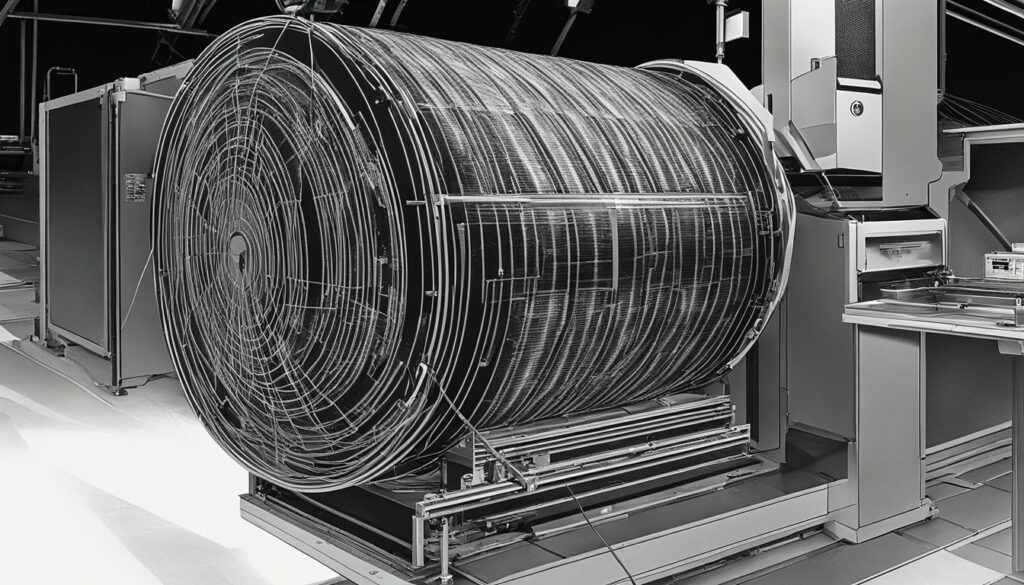
Advantages of Laser Printers
| Advantages | Description |
|---|---|
| Efficiency | Laser printers are designed to print quickly and efficiently, making them the ideal choice for busy office environments. |
| Cost-effective | Although laser printers can be more expensive to purchase than ink-based printers, their toner cartridges can produce a high volume of prints, making them a cost-effective long-term investment. |
| High resolution | Laser printers produce sharp and precise prints with high resolutions, making them ideal for printing detailed documents and images. |
| Low maintenance | Unlike ink-based printers, laser printers require less maintenance and fewer replacements, making them a low-maintenance option for office printing. |
Overall, laser printers offer a reliable and efficient printing solution for offices of all sizes. With their advanced technology and numerous advantages, they remain a popular choice for businesses seeking quality and cost-effective printing options.
Inkless Printing in Specialty Industries
While inkless printing technology brings numerous advantages to general printing, it has also revolutionized specialty printing in several industries. Medical imaging, for example, requires high-precision printing to ensure that images are accurately rendered to guide medical diagnosis and treatment. Inkless printing has emerged as a reliable and cost-effective method of producing high-quality medical images that aid diagnosis and decision making.
Photography is another field that has seen a rapid shift towards inkless printing technology. With the ability to print images without the need for ink cartridges, inkless printing technology offers photographers a convenient and cost-effective way of producing high-quality prints for their clients.
Furthermore, inkless printing is used in a wide variety of specialty printing applications, including reproducing artwork, printing on industrial materials, and creating durable labels and barcodes for manufacturing and logistics industries.
Example of Applications of Inkless Printing in Specialty Industries
| Industry | Application |
|---|---|
| Medical Imaging | Printing high-precision images for accurate medical diagnosis and treatment |
| Photography | Producing high-quality prints for clients |
| Art Reproduction | Creating faithful reproductions of artwork for collectors and enthusiasts |
| Industrial Printing | Printing on a wide range of materials, including plastics, metal, and ceramics |
| Manufacturing and Logistics | Creating durable labels and barcodes for product identification and tracking |
As inkless printing technology continues to evolve, we can expect to see it used in more specialty printing applications. From the medical and photography industries to industrial printing and manufacturing, inkless printing offers numerous benefits and cost-effective solutions that benefit the environment and the bottom line.
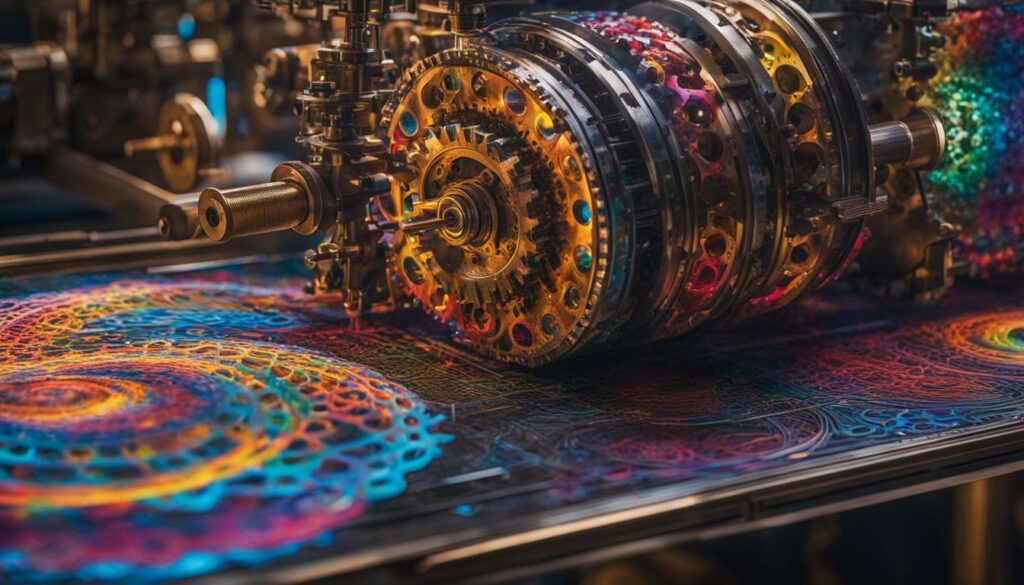
Maintaining and Troubleshooting Inkless Printers
While inkless printers like thermal and electrostatic printers offer several advantages over traditional ink-based printers, it's still essential to maintain them and address any issues that may arise. Here are some tips for maintaining and troubleshooting your inkless printer:
Cleaning your Printer Regularly
Since inkless printers do not use traditional ink cartridges, they require different cleaning procedures. For thermal printers, it's crucial to remove debris and dust that accumulates on the printer's thermal head regularly. To do this, use a lint-free cloth and avoid using sharp objects that may damage the printer's delicate components. Electrostatic printers primarily use toner and require cleaning of its roller and toner cartridge. Consult the manufacturer's manual for specific cleaning procedures.
Replacing Consumables
Inkless printers require consumables like toner cartridges, rollers, or ribbons that may need replacing as they reach the end of their life cycle. If the quality of your prints degrades or the printer displays an error message, it may be time to replace these consumables. It's best to use original consumables recommended by the manufacturer to prevent compatibility issues.
Troubleshooting Common Issues
Despite regular maintenance, issues may still arise while using an inkless printer. Here are some common issues and how to troubleshoot them:
The printer is not turning on: Check the power cord and confirm that it is correctly plugged into the printer and outlet.
The print quality is poor: Check the consumables and correct any issues with the roller or thermal head. Additionally, ensure that the printer settings are adjusted correctly for the type of paper being used.
The printer displays an error message: Consult the manufacturer's manual or support team for assistance in identifying and correcting the issue.
By following these tips for maintaining and troubleshooting inkless printers, you can ensure they continue to function optimally and produce high-quality prints reliably.
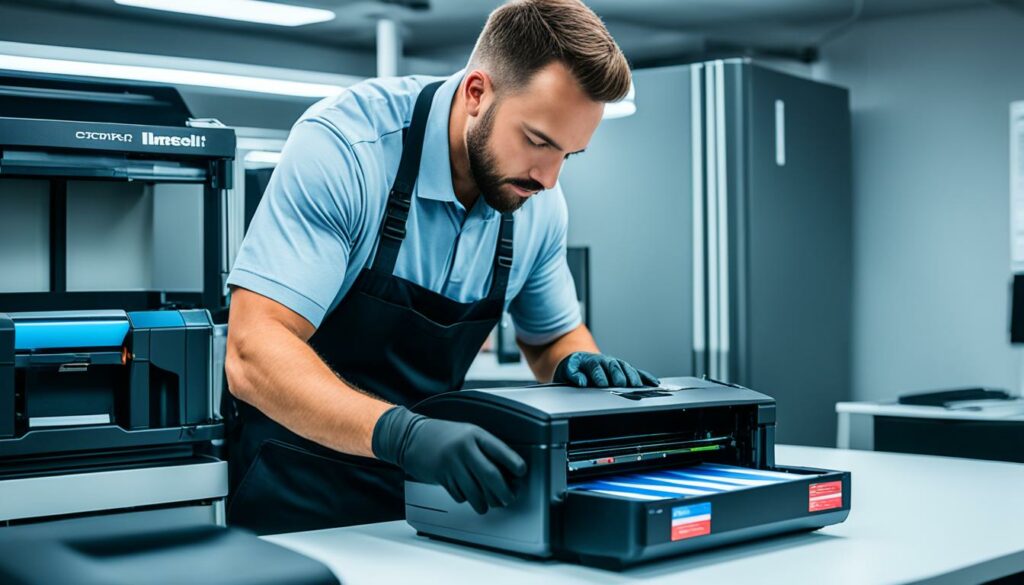
Conclusion
Inkless printing technology has provided us with a remarkable alternative to traditional ink-based printing. By using thermal and electrostatic printing techniques, printers can produce high-quality images and documents efficiently, cost-effectively and sustainably.
As we look towards the future, inkless printing technology is expected to expand across various industries, with emerging technologies promising further advancements.
Whether you're in an office setting or a specialty industry such as medical imaging or photography, inkless printing is proving to be a reliable and efficient solution.
With proper maintenance and troubleshooting, inkless printers can provide long-term value to businesses and individuals. So why not consider making the switch to inkless printing today?

I'm Morgan, the creator of VPNForMe — a site born from too many hours spent side-eyeing sketchy VPN reviews and buffering videos.
I wanted a place where people could get straight answers about privacy, streaming access, and which VPNs actually deliver — without the hype or tech jargon.

